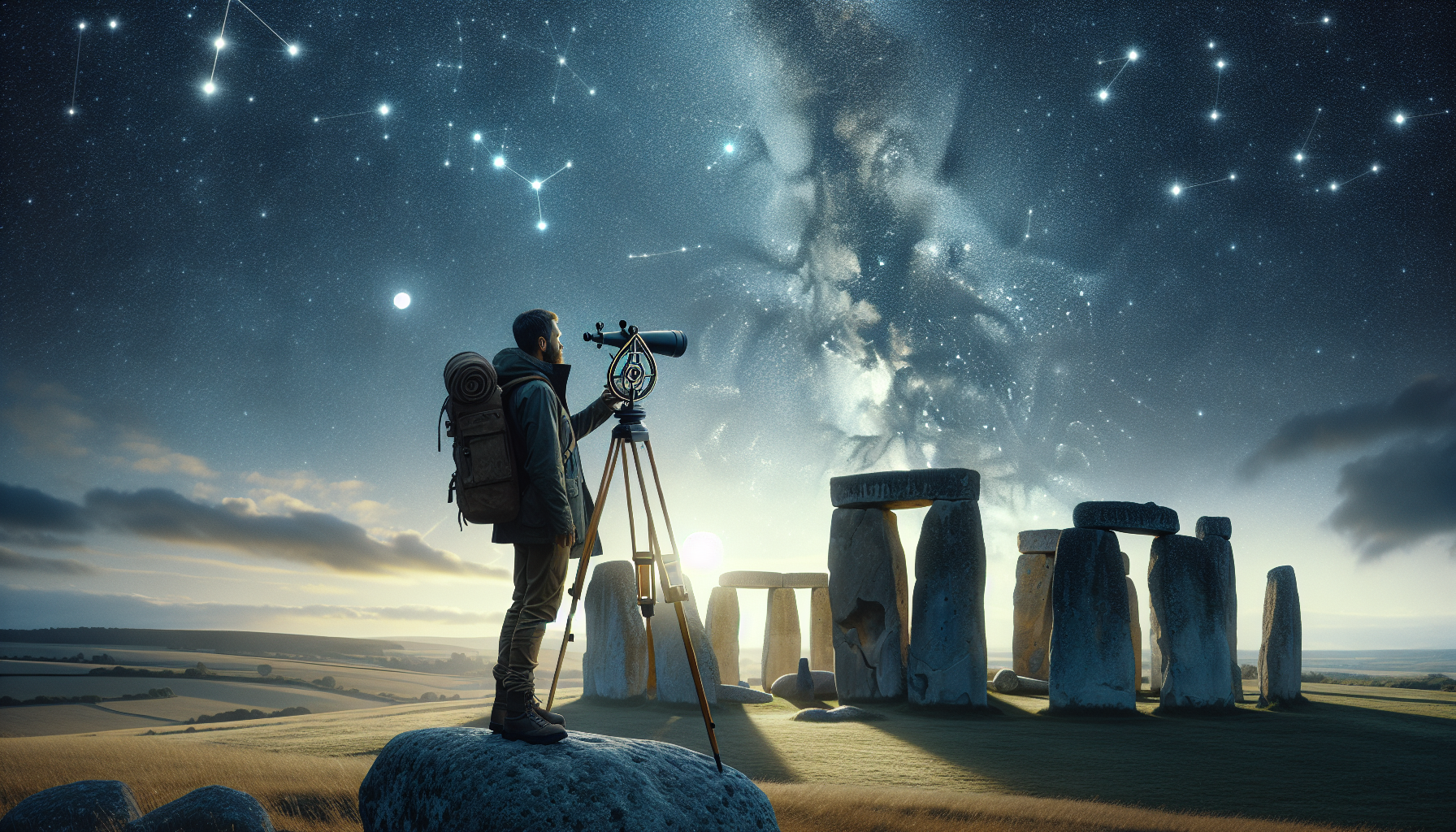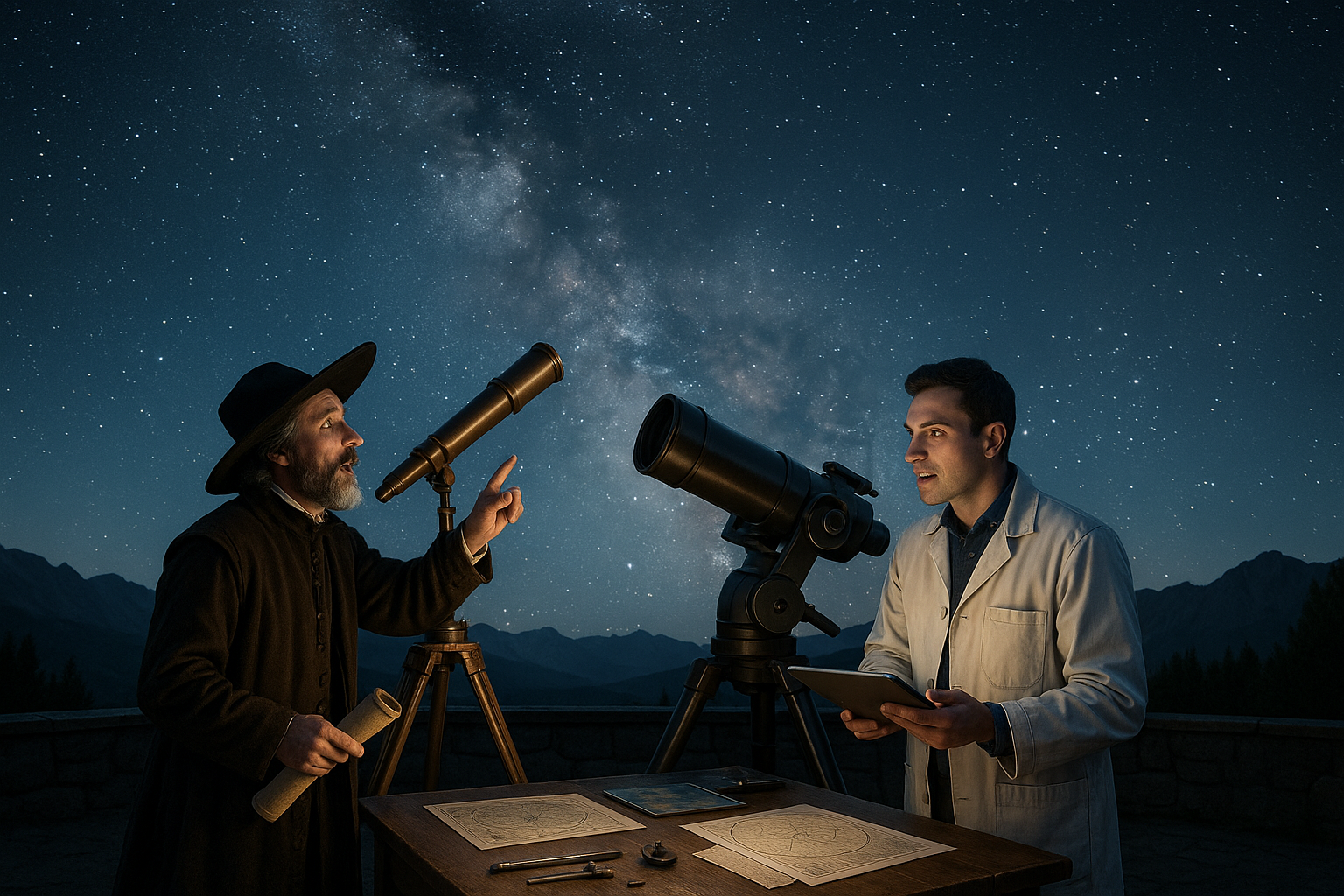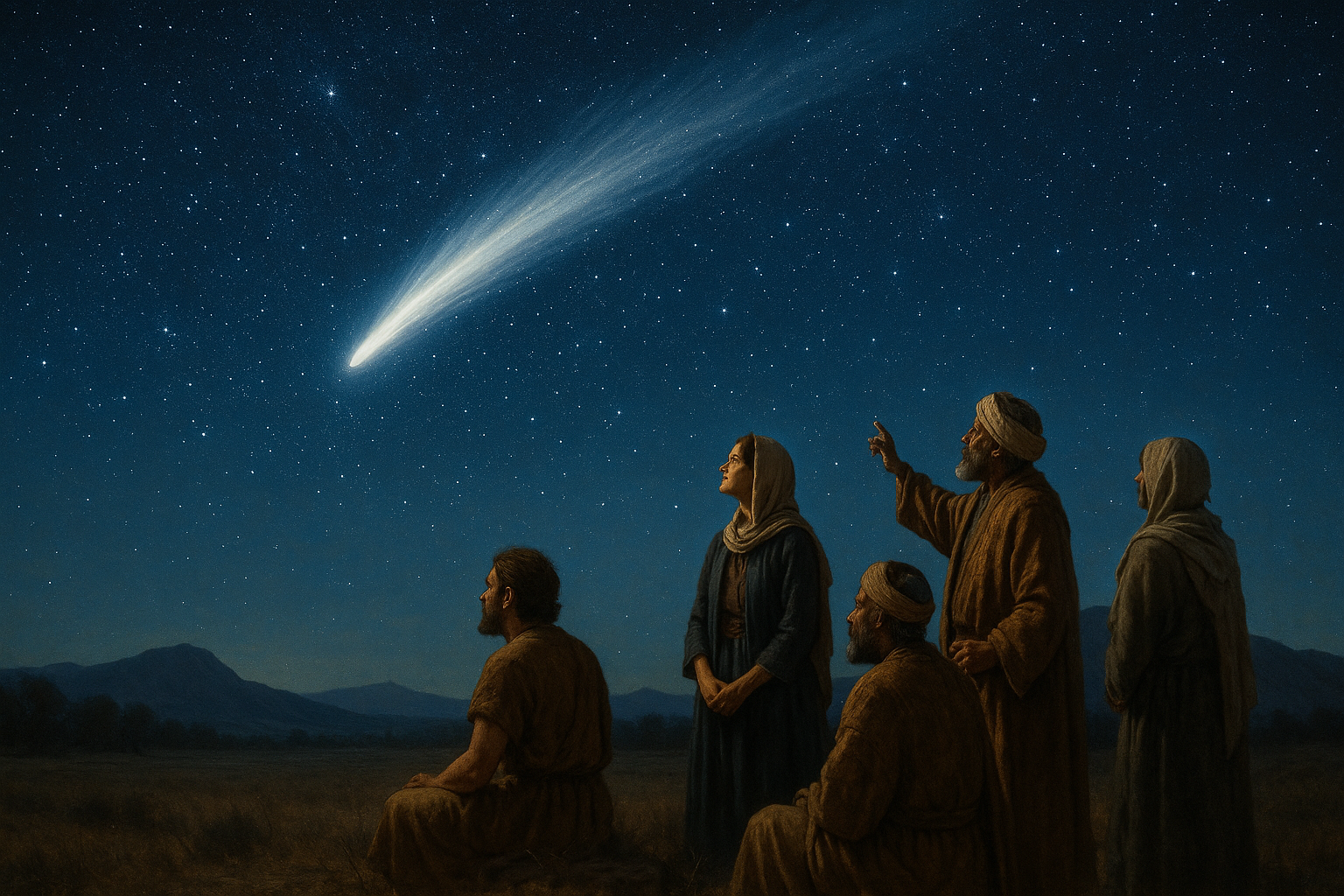In an age where GPS devices and digital maps have become indispensable companions for travelers, the ancient practice of celestial navigation might seem like a relic from a bygone era. Yet, there is something undeniably magical about using the stars to guide our journeys, a practice that not only connects us to the wisdom of our ancestors but also to the vast and awe-inspiring cosmos above. Celestial navigation, the art of using celestial bodies like stars, the moon, and the sun to determine one’s position and course, has been a guiding light for explorers, sailors, and adventurers for millennia. As we embark on this exploration of celestial navigation, we will discover how monuments around the world have played a crucial role in this mystical art, unlocking the secrets of the stars for countless journeys across the seas and beyond. 🌌
Our journey begins with an exploration of the fascinating history of celestial navigation. Long before the advent of modern technology, ancient civilizations mastered the art of reading the stars. From the Polynesians, who navigated the vast Pacific Ocean with incredible precision, to the ancient Egyptians and Greeks, who constructed monumental structures aligned with celestial bodies, the stars have always been a guiding force. These civilizations understood that the sky was a map, a cosmic guidebook that could be read with skill and knowledge. By delving into their stories, we gain a profound appreciation for the ingenuity and determination that allowed early navigators to traverse vast distances with nothing more than the stars as their compass.
As we delve deeper, we will examine the role of monumental structures in celestial navigation. Throughout history, people have built awe-inspiring monuments not only to honor deities or commemorate events but also to serve as celestial observatories. The Great Pyramids of Giza, Stonehenge, and Chichén Itzá are just a few examples of how ancient architects aligned structures with celestial events, transforming them into tools for navigation and timekeeping. By unlocking the secrets encoded in these stone behemoths, navigators could predict solstices, equinoxes, and other astronomical phenomena crucial for successful voyages. These monuments stand as enduring testaments to humanity’s quest to understand the universe and our place within it.
In today’s fast-paced world, the art of celestial navigation offers a unique opportunity to disconnect from our digital dependencies and reconnect with the natural world. By learning to read the night sky, we not only gain a practical skill but also develop a deeper awareness of the universe’s rhythms and our place within them. Celestial navigation challenges us to slow down, to observe, and to engage with our surroundings in a more meaningful way. For modern adventurers and those with a spirit of curiosity, mastering this ancient art can be a transformative experience, offering a sense of accomplishment and connection that no digital device can replicate.
Finally, we will explore how celestial navigation can enrich our travels, whether by sea, land, or even air. From planning a sailing expedition across the open ocean to embarking on a stargazing journey in a remote desert, the principles of celestial navigation can enhance our adventures in countless ways. We will discuss practical tips for getting started with celestial navigation, including essential tools, techniques, and resources that can help you unlock the stars’ secrets for your journey. Whether you’re an experienced sailor, a novice explorer, or simply someone with a passion for the stars, this ancient art offers a captivating and rewarding path to discovery.
Join us as we embark on this celestial journey, unlocking the secrets of the stars through the mystical art of celestial navigation. With the help of ancient monuments and the timeless guidance of the night sky, we will uncover a world where science, history, and adventure intertwine. Prepare to be inspired by the stories of those who came before us, and let the stars guide you on your next great adventure. ✨
The Foundations of Celestial Navigation
Celestial navigation is an ancient technique that relies on the positions of stars, the sun, and the moon to determine one’s position on Earth. This method was the cornerstone of exploration during the Age of Discovery, enabling sailors to traverse vast oceans with a remarkable degree of accuracy. At its core, celestial navigation requires a keen understanding of astronomy, trigonometry, and the use of certain instruments. The process involves measuring angles between a celestial body and the horizon, known as “sights,” and then using these measurements to calculate one’s position relative to the globe.
For millennia, explorers and navigators have relied on the celestial sphere—a conceptual representation of the sky—to map their journeys. This sphere is divided into 360 degrees and is filled with constellations and notable stars. By tracking these celestial markers, navigators can determine both latitude and longitude, a critical skill for avoiding hazards and reaching intended destinations. Understanding the celestial sphere and its movements is fundamental to mastering this art. It’s fascinating to consider how ancient seafarers, without the aid of modern technology, could navigate with such precision.
One of the most intriguing aspects of celestial navigation is its use of specialized instruments. The sextant, for example, allows navigators to measure the angle between a celestial body and the horizon with remarkable accuracy. The mariner’s astrolabe and the cross-staff were early instruments that served similar purposes. Each tool played a crucial role in evolving the practice of celestial navigation, making it more accessible and precise. For those interested in seeing these instruments in action, check out this informative video by Navigation Now on YouTube.
Why Celestial Navigation Remains Relevant
Despite the advent of modern GPS technology, celestial navigation remains an essential skill for mariners. There are several reasons why it continues to be taught and used today. Firstly, celestial navigation acts as a reliable backup in case electronic navigation systems fail. Electronics can be prone to malfunction due to technical issues or interference, whereas the stars are a constant and dependable guide. Secondly, understanding celestial navigation provides a profound connection to the natural world and a deeper appreciation for the universe.
Furthermore, learning celestial navigation enhances critical thinking and problem-solving skills. It requires meticulous calculations and a strong grasp of mathematical principles, which can be intellectually rewarding. Additionally, many sailors find joy and satisfaction in mastering such an ancient and storied art. By using nothing more than the sky and a few simple tools, navigators can achieve the remarkable feat of traversing the world’s oceans. This aspect of self-reliance and competence is incredibly empowering.
Moreover, celestial navigation is not just a practical skill but also a cultural heritage. Throughout history, various cultures have developed unique methods and traditions around navigation by the stars. From the Polynesians of the Pacific to the Norse seafarers of the North Atlantic, each group contributed to the rich tapestry of celestial navigation. Understanding this shared history can provide insights into human ingenuity and resilience. It also fosters a sense of connection to those who came before us, who gazed at the same stars to guide their journeys.
The Role of Monuments in Celestial Navigation
Monuments have played a crucial role in celestial navigation throughout history. Ancient civilizations constructed massive structures aligned with celestial bodies, serving both practical and ceremonial purposes. These monuments were not only architectural marvels but also sophisticated astronomical instruments. They allowed observers to track celestial events, such as solstices and equinoxes, which were critical for agriculture, religious rituals, and navigation.
One of the most famous examples is Stonehenge in England, a prehistoric monument with alignments pointing to the solstices. Similarly, the pyramids of Giza in Egypt are thought to be aligned with certain stars, suggesting a deep understanding of celestial mechanics. These structures provided ancient astronomers with a reference point for observing the heavens. By studying these alignments, they could accurately predict seasonal changes and navigate across the land and sea.
In the Americas, the ancient Maya civilization constructed observatories such as El Caracol at Chichen Itza, which featured windows aligned with specific celestial events. These architectural feats demonstrate the advanced knowledge and skill of ancient peoples in using the stars for navigation. To delve deeper into the role of these monuments, you might be interested in watching this video by History Channel, which explores the connection between ancient structures and celestial phenomena.
How Monuments Influence Modern Navigation
While modern navigation systems have largely replaced ancient methods, the principles established by these monuments continue to inform contemporary practices. Many techniques used in celestial navigation today have their roots in ancient astronomy and the study of these structures. For instance, the concept of using fixed points—whether on land or in the sky—to determine location is a foundational aspect of both ancient and modern navigation.
The study of these monuments has also inspired innovations in technology and methodology. Researchers often apply the principles of archaeoastronomy, a field that examines how ancient societies understood and utilized celestial phenomena. By understanding how past cultures navigated using monuments and stars, modern scientists and engineers have developed more accurate and efficient navigation tools. This fusion of ancient wisdom and modern technology showcases the enduring legacy of celestial navigation.
Moreover, these ancient structures continue to captivate the imagination of people around the world. They serve as reminders of humanity’s enduring quest for knowledge and our desire to explore and understand the cosmos. By preserving and studying these sites, we not only honor the achievements of our ancestors but also inspire future generations to continue this pursuit of discovery. Engaging with this history provides a richer, more profound understanding of our place in the universe.
Practical Applications of Celestial Navigation Today
In today’s world, celestial navigation may seem like a relic of the past, but it still holds practical applications. Many sailors, especially those embarking on long ocean voyages, continue to rely on celestial navigation as a backup to electronic systems. The ability to navigate by the stars is an essential skill for any mariner, offering peace of mind in case of technological failures.
Moreover, celestial navigation is increasingly being incorporated into educational programs. Sailing schools, maritime academies, and even some public education curricula are recognizing the value of teaching this ancient art. It provides students with a hands-on learning experience that enhances their understanding of astronomy, mathematics, and physics. The skills learned through celestial navigation are applicable in many fields, from aviation to cartography, making it a valuable addition to any educational program.
Additionally, celestial navigation is enjoying a resurgence among enthusiasts and hobbyists. Many people are drawn to the challenge and romance of navigating by the stars, seeking to connect with nature in a more profound way. Whether through stargazing, amateur astronomy, or sailing, individuals are rediscovering the joys and rewards of celestial navigation. For those interested in learning more, numerous online courses and workshops are available that cater to both beginners and experienced navigators. By embracing this timeless art, we can enrich our lives and gain a deeper appreciation for the world around us.
The Future of Celestial Navigation
As technology continues to evolve, the future of celestial navigation looks promising. Advances in software and mobile applications are making it easier for people to learn and practice this skill. These tools offer interactive experiences, guiding users through the process of taking sights and calculating positions. By combining traditional techniques with modern technology, celestial navigation is becoming more accessible to a wider audience.
Furthermore, the increasing interest in space exploration presents new opportunities for celestial navigation. As humanity looks beyond Earth to explore other planets and celestial bodies, the principles of navigation by the stars will remain relevant. The same techniques that guided ancient mariners across oceans may one day be used to navigate the vastness of space. This continuity between past and future highlights the enduring value of celestial navigation as a tool for exploration and discovery.
In conclusion, celestial navigation is much more than a historical curiosity. It is a living tradition that continues to inspire and challenge us. By exploring the mystical art of celestial navigation and its connection to monuments, we can unlock the secrets of the stars for our journeys, both on Earth and beyond. Whether for practical purposes or personal enrichment, learning to navigate by the stars is a journey worth undertaking. 🌟
Further Exploration
- Consider enrolling in a celestial navigation course to gain practical experience.
- Visit historical sites and monuments to explore their astronomical alignments.
- Join a stargazing club or attend an astronomy event to deepen your understanding.
- Experiment with navigation tools and apps to enhance your learning.
| Navigation Tool | Description | Modern Equivalent |
|---|---|---|
| Sextant | Measures angles between celestial bodies and the horizon. | GPS devices |
| Astrolabe | An ancient tool for solving problems relating to time and the position of the stars. | Astronomical software |
| Cross-Staff | Used to measure angles and heights, similar to a simple sextant. | Digital theodolites |

Conclusion
Conclusion:
In this exploration of celestial navigation through the lens of ancient monuments, we have embarked on a journey that bridges the gap between history, science, and spirituality. Celestial navigation is not merely a relic of the past but a living practice that connects us to the cosmos and our shared human heritage. By understanding how ancient civilizations like the Egyptians, Mayans, and Polynesians used the stars to guide their travels, we gain insight into their ingenuity and deep connection with the universe.
Firstly, we delved into the history of celestial navigation, highlighting its significance for ancient mariners and travelers. Monuments such as Stonehenge and the Pyramids of Giza serve not only as architectural marvels but also as astronomical observatories, meticulously aligned with celestial bodies. These structures symbolize the profound understanding that our ancestors had of the skies, revealing their sophisticated knowledge of astronomy and their ability to predict celestial events with remarkable accuracy.
Next, we explored the methods employed by these ancient navigators, emphasizing the role of the stars, the sun, and the moon as natural compasses. For instance, the Polynesians’ ability to traverse vast oceanic distances using star paths showcases the practicality and precision of celestial navigation techniques. By decoding these methods, modern navigators and enthusiasts can appreciate the intricate relationship between human innovation and the natural world.
Moreover, we considered the cultural and spiritual dimensions of celestial navigation. The stars have always held a mystical allure, guiding travelers not only physically but also spiritually. Ancient cultures imbued celestial navigation with mythological and religious significance, viewing the stars as divine entities that influenced their destinies. This blend of science and spirituality continues to inspire contemporary seekers who find solace and direction under the night sky.
The relevance of celestial navigation extends beyond historical curiosity. In an age dominated by digital technology and GPS systems, revisiting these ancient techniques offers a refreshing perspective on self-reliance and environmental awareness. Celestial navigation encourages us to engage with nature, fostering a deeper appreciation for the celestial wonders that have guided humanity for millennia.
As we conclude this exploration, we invite you to reflect on the timeless wisdom of celestial navigation. Consider how you might incorporate these ancient practices into your own life, whether as a hobby, a meditative practice, or a way to connect with the natural world. The stars remain a constant in our ever-changing world, offering guidance and inspiration to those willing to look up and unlock their secrets.
We encourage you to share this article with fellow enthusiasts, friends, and family. Engage in discussions about the marvels of celestial navigation and how these ancient techniques can enrich our modern lives. Your thoughts and experiences are valuable contributions to this ongoing dialogue.
For further exploration, consider visiting the following resources that delve deeper into the fascinating world of celestial navigation:
1. The Royal Museums Greenwich provides an extensive collection of articles and exhibits on maritime navigation: Royal Museums Greenwich
2. The Polynesian Voyaging Society offers insights into traditional Polynesian navigation techniques: Polynesian Voyaging Society
3. For an academic perspective, NASA’s website includes educational materials on celestial mechanics: NASA Education
By learning from the past and embracing the wisdom of celestial navigation, we can navigate our own journeys with clarity and purpose. May the stars illuminate your path, guiding you toward new horizons and endless possibilities. 🌟
Thank you for joining us on this celestial journey. Your curiosity and engagement are the stars that inspire us to continue exploring the wonders of the universe.
Toni Santos is a visual storyteller and cosmic interpreter whose work illuminates the ancient skywatchers and their prehistoric astronomy—the profound ways early humans observed and revered the heavens before written history. Through a visionary lens, Toni explores how the stars, planets, and celestial cycles shaped myth, ritual, and survival in cultures lost to time.
Rooted in a fascination with archaic observatories, stone alignments, and celestial symbolism, Toni’s creative journey reveals the deep human impulse to understand and harmonize with the cosmos. From lunar phases guiding planting seasons to the sacred paths of the Milky Way, each of his works embodies the awe and knowledge encoded in the night sky.
Combining artistic craftsmanship with archaeological insight, Toni’s pieces evoke the mystery and precision of prehistoric astronomers. His work does more than depict—it channels the timeless dance between earth and sky, bridging ancient wisdom with contemporary wonder.
As the visionary behind Vizovex, Toni shares curated visuals, essays, and symbolic studies that invite others to reconnect with the cosmic heritage written in stone and starlight. His creations are a call to look upward, to listen to the silent stories told by the stars, and to honor the first astronomers who mapped the heavens with reverence and ingenuity.
His work is a tribute to:
The celestial wisdom of prehistoric peoples
The sacred geometry of ancient observatories
The enduring bond between human culture and the cosmos
Whether you’re a stargazer, a scholar of ancient mysteries, or someone captivated by the universe’s earliest storytellers, Toni welcomes you to journey through a space where the sky is both map and myth—one constellation, one ritual, one revelation at a time.




